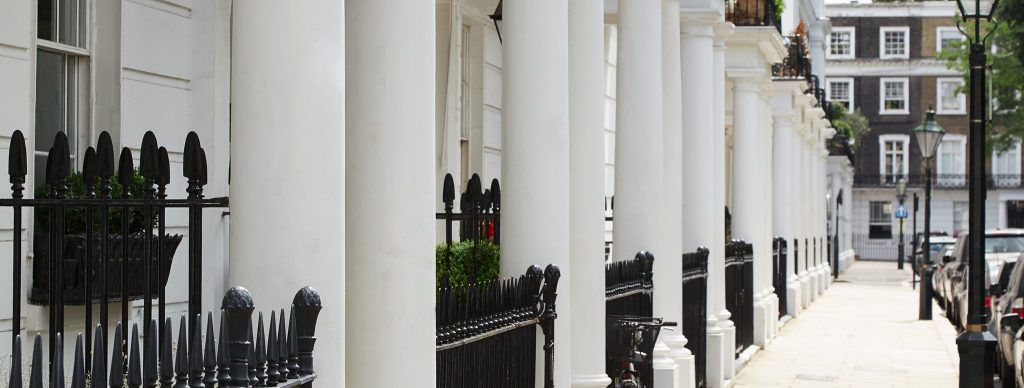When the property market came out of lockdown in June, the entire property industry held its breath. Covid19 felt like the latest in a long series of crisis over the last ten years: We’ve had referenda on proportional representation, Scottish devolution and membership of the European Union, we’ve also had four general elections, three Prime Ministers, the threat of a radical Labour government and now a global pandemic. A plague of frogs next, perhaps?
Not surprisingly, we initially had a succession of articles arguing that the end is nigh financially, the property market is doomed, and prices are about to plummet by 20%. So the $64,000 question is how much of this has happened?
Firstly, it’s well worth pointing out that the “property market” does not exist per se, any more than “the Christian Community” exists (just ask anyone who grew up in Northern Ireland); it’s a lazy cover-all term for lots of different markets, all of which are going to react very differently to the aftermath of the Covid19 lockdown and the resulting changes.
The closer you get to markets which involve people housing themselves, whether it is in £300,000 flats or £10 million houses, the less things have changed. In the run up to March, the market was starting to recover quickly in the wake of the removal of the threat of a Jeremy Corbyn Government and it would appear that the lock-down was more like a ‘Pause’ button than an ‘Off’ button. Stock is short, new vendors are conspicuous by their absence and the existing stock, if it was sensibly priced, has now mostly been snapped up.
This shouldn’t really surprise us as considerable pent up demand had built up between 2017 and 2020 when moves were deferred, and the choice which still faces owner occupiers is do they rent and pay someone else’s mortgage, or do they buy and pay their own? The general mood amongst buyers emerging from lockdown seems to have been either “I really do need a bigger house” or occasionally “we really need to go and live apart in different houses”.
To exacerbate the problem of short supply meeting strong demand, the traditional selling season of March though to June when the bulk of the years stock of new property is valued and launched by the estate agents, was put on hold in 2020, as vendors and agents isolated at home instead.
The only recognisably different trend which has emerged is the swing of interest towards the country market – not as second homes, but as a real home outside of the hubbub of London. During the nine week lockdown period, an awful lot of technophobes like me have discovered how effective virtual meetings held over “Zoom” or “Teams” can be, thus finally removing the need to traipse into the city, five days a week. In the country, agents are reporting a huge spike in interest in country properties and we have seen a big uptick of new clients looking to move out of town. In London, we’re seen a real shift in focus towards properties a little bit further out of the centre of town, which offer more bang for your buck, with decent outside space.
However, not all in the garden is rosy and for commercial property the future looks difficult as companies move across to more ‘virtual structures’ with staff spending more time working from offices at home, there is likely to be a move away from huge, expensive, corporate headquarters. If Covid19 is here to stay as an annual flu, social distancing will become the norm, and trying to maintain it in a large office which resembles a rather plush battery-chicken shed, will become difficult and very expensive.
Another area which continues to look weak is the ‘discretionary’ end of the property market, traditionally dominated by international buyers looking for expensive trophy flats or houses, or investor buyers looking for rental investments in modern blocks, often situated in obscure and nasty parts of London; these are not things that anyone has to buy, merely that it might be nice to buy them when the good times are rolling. As a result of a confused picture vis-a-vis quarantine restrictions and chaos in the airline industry, this sector has yet to pick up. However, with a cheap pound and slowly recovering oil prices, many of these buyers will eventually return to the market, it’s just a matter of when.
It’s as confused a picture as we have seen, but it’s generally a much stronger and robust marketplace that we had expected or even dared hope for. Buyers who have breezed into the market after lockdown, throwing in offers 20% below the asking price, have been surprised to find that not only were their offers rejected, they have also been quietly deleted from the Estate Agents’ books. With an abundance of strong buyers, the agents are aggressively weeding out the timid or cheeky ones.
In 1956, Doris Day sang “Que sera sera, whatever will be will be, the futures not ours to see, que sera sera” in the Hitchcock film, “The man who knew too much”. I know just how she felt.
By Saul Empson.
[avatar user=”Saul” size=”medium” /]
